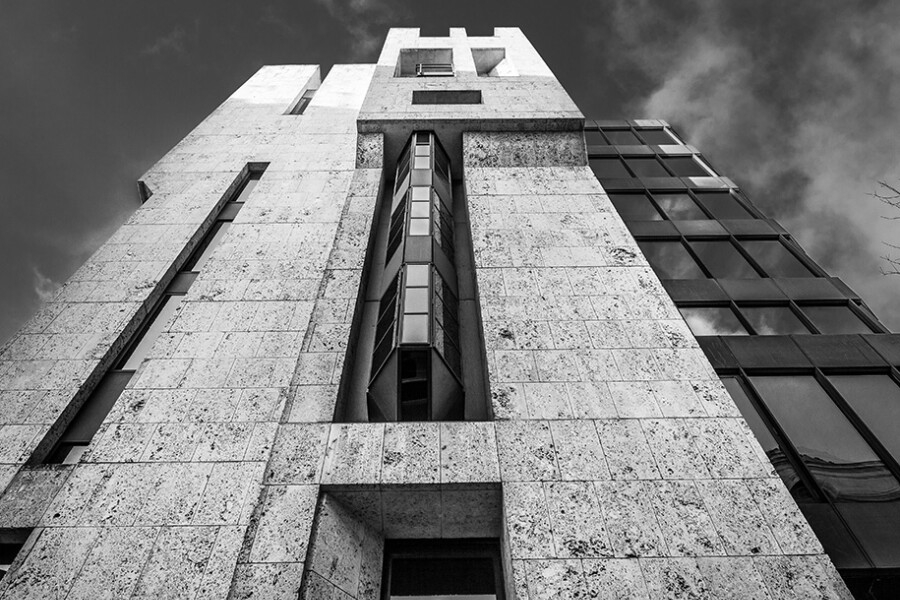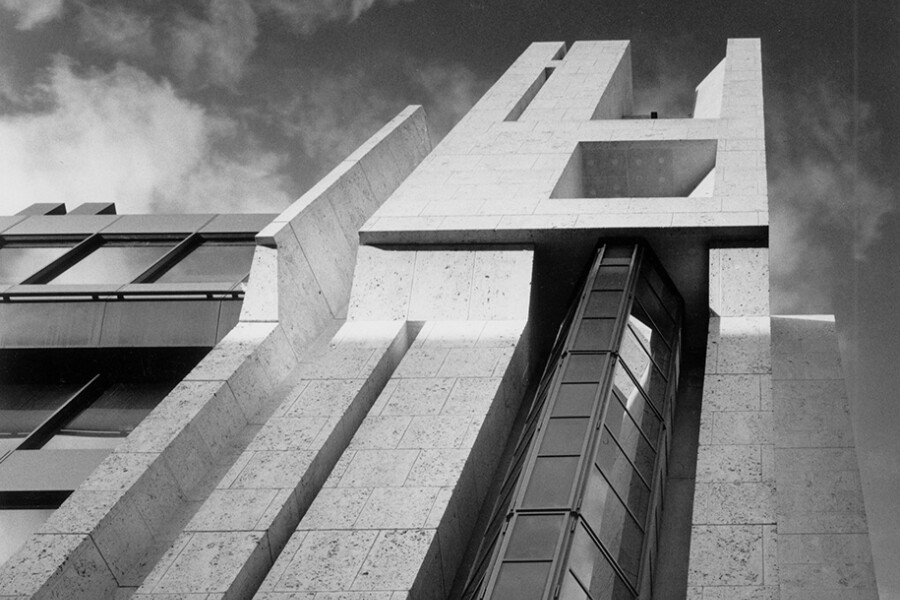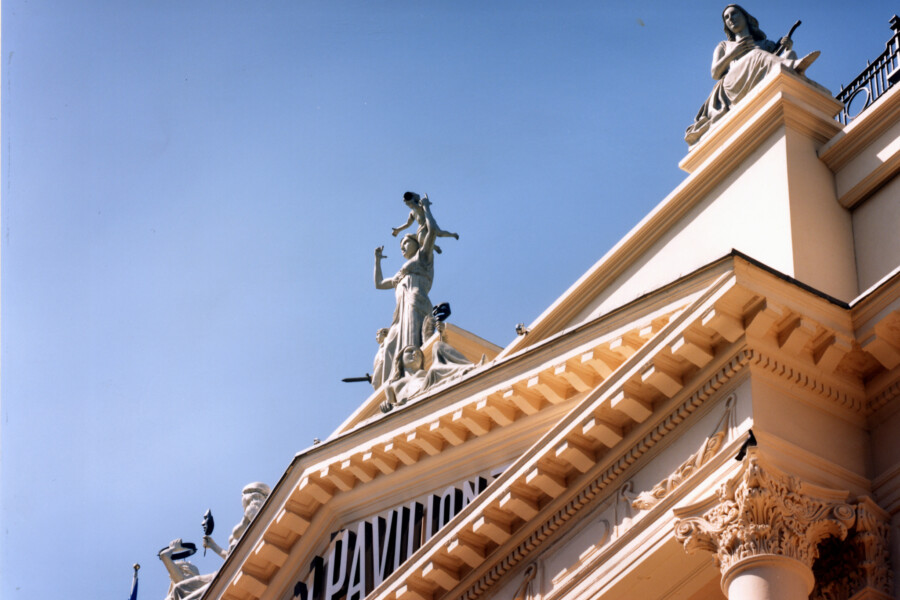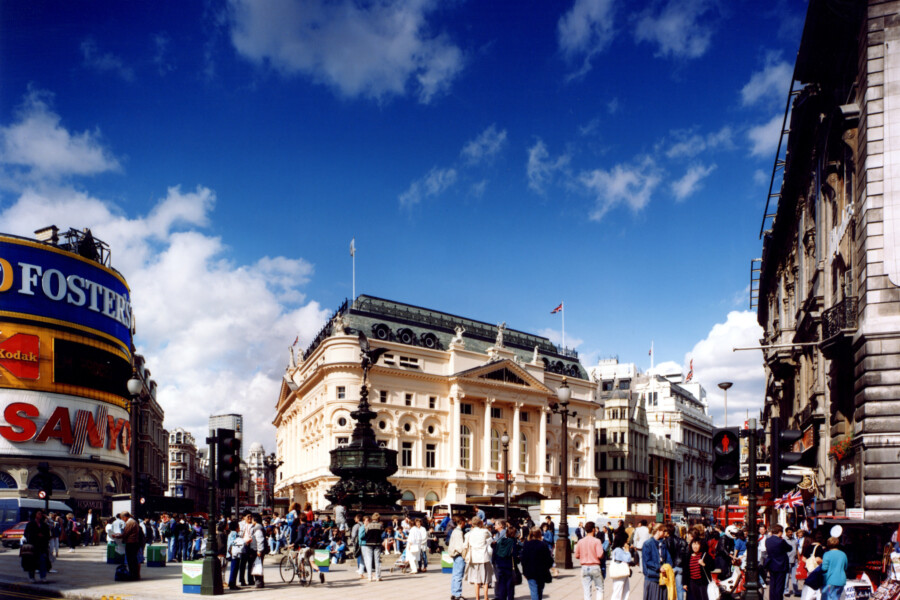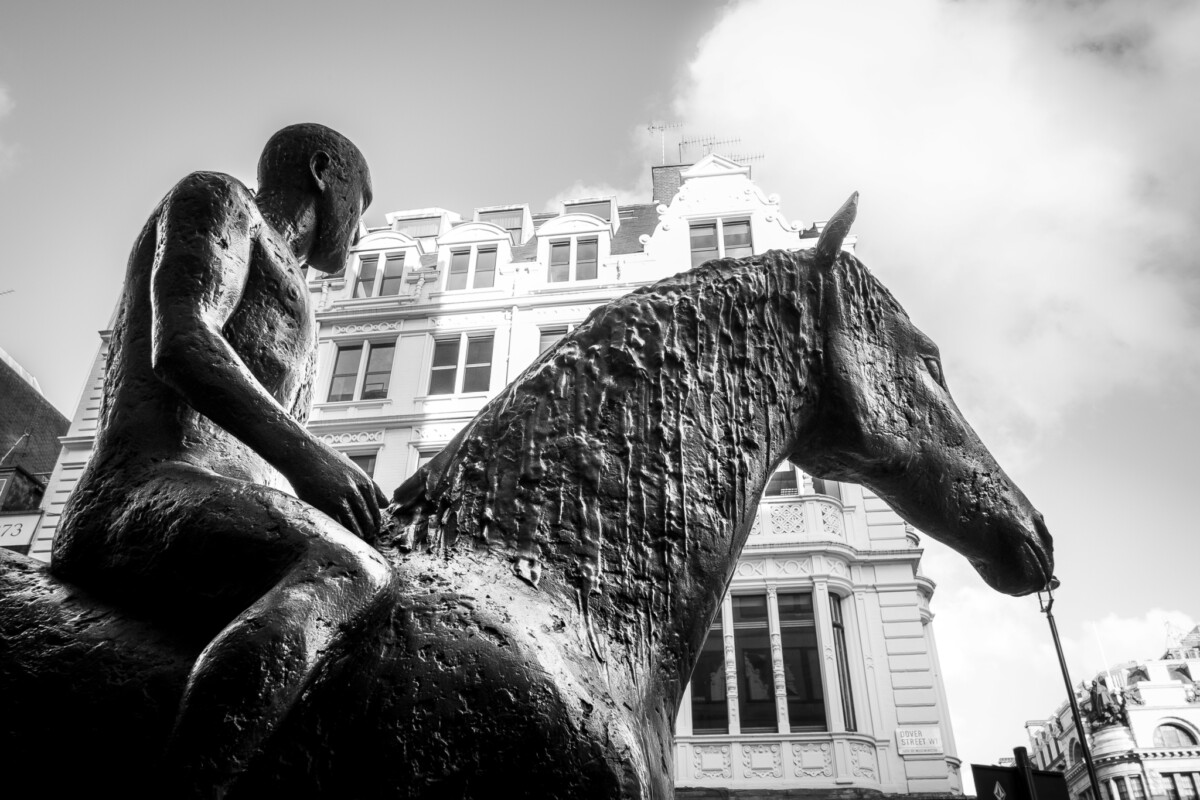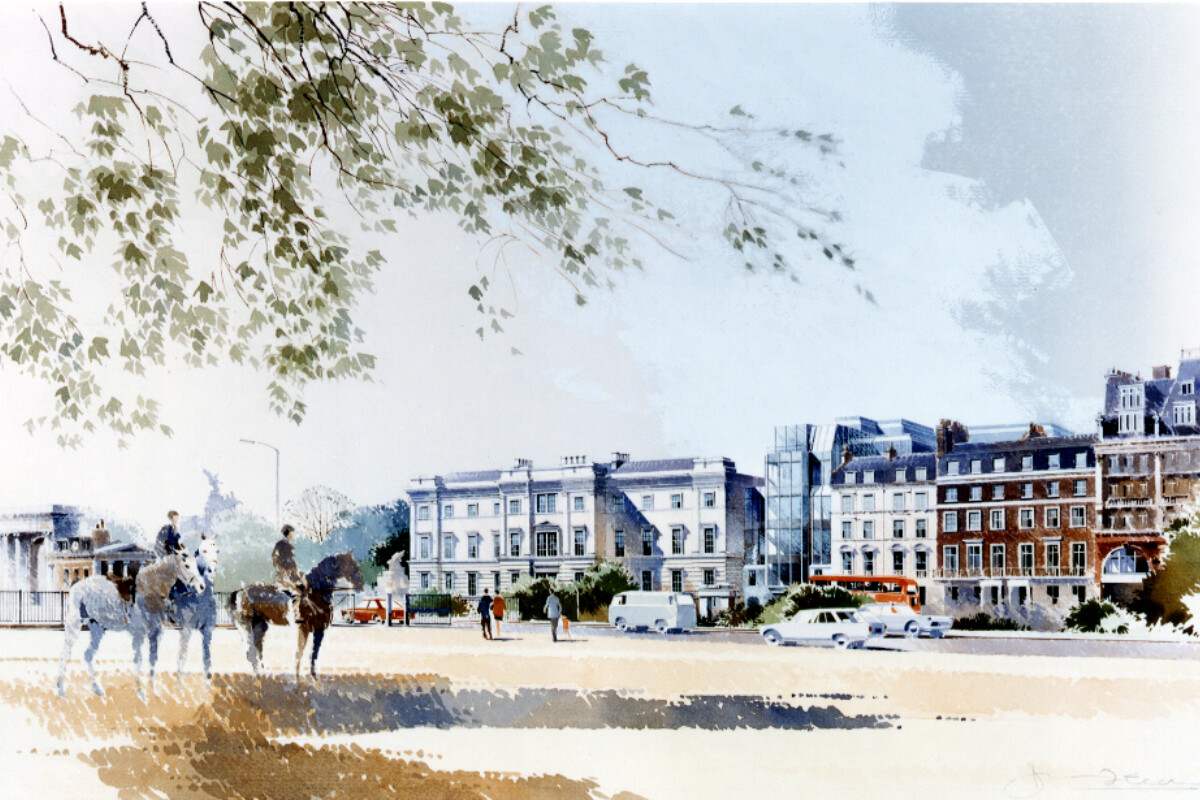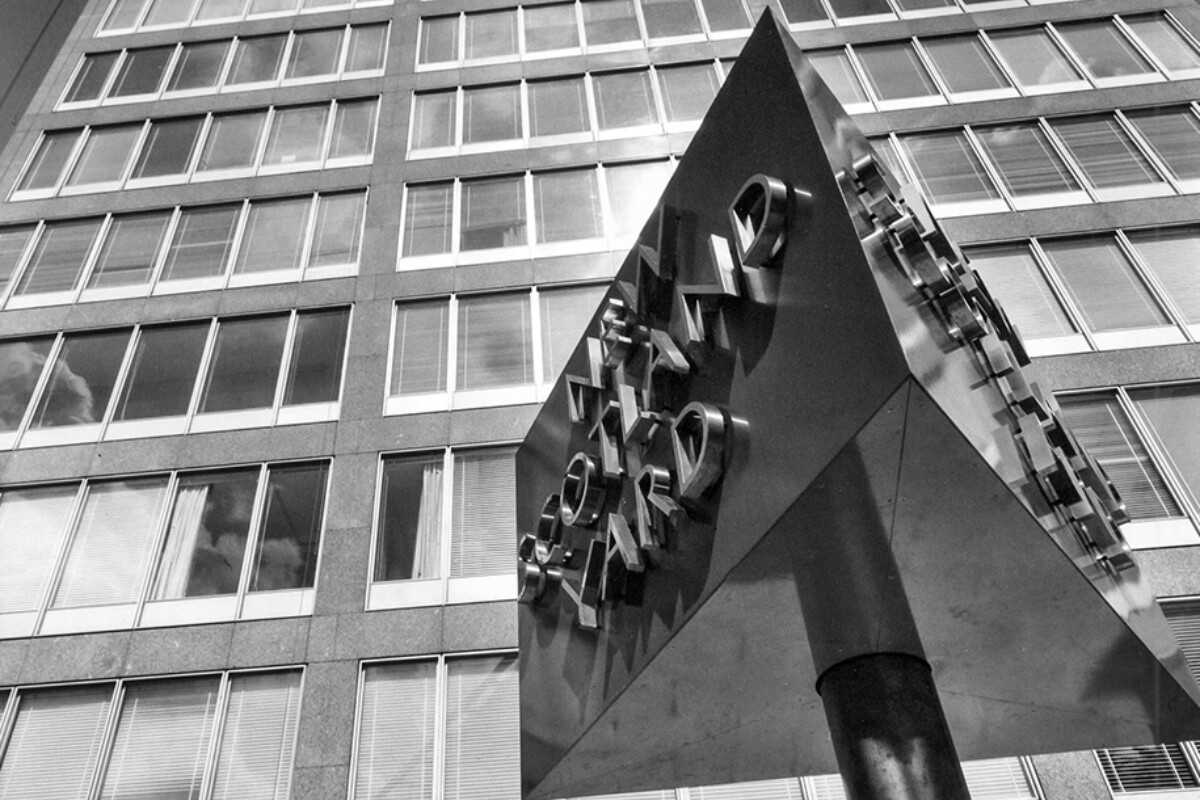
Chapman Taylor at 60: Our London origins
In 1959, London’s newest architectural practice took on the first of many pioneering commissions in the UK capital. Main Board Director Chris Lanksbury examines Chapman Taylor’s London origins, its role in designing and delivering some of the city’s best buildings and the relevance of this heritage to our present-day work.
Chapman Taylor was formed in London 60 years ago by our founding partners Jane Durham, John Taylor and Bob Chapman. Our formative work, spanning the 1960s – 1980s, includes some of London’s most prominent projects, and helped Chapman Taylor develop a distinctive architectural set of values that still has relevance to our work today.
The first major commission was the design and delivery of New Scotland Yard, in Westminster, which became the headquarters of the London Metropolitan Police. While most renowned in the public eye for its famous triangular revolving sign, from a planning perspective it was notable for the successful placing of its rectangular office buildings within a challenging triangular site.
Chapman Taylor went on to design a number of significant buildings in the capital throughout this period. These projects delivered innovative design and, most importantly, responded to the historic character of London.
Caxton House, again in Westminster, occupies a key site in the vicinity of Parliament Square and Westminster Abbey. This office development, built in 1976-79, uses a vigorous crenelated skyline design and high-quality materials such as its Portland Stone finish – providing an innovative design solution for the urban context.
The same contextual challenges were present in the design for Lansdowne House in Berkeley Square – one of London’s greatest public squares, situated in the heart of Mayfair. The resulting building prompted planning inspectors to conclude that it was ‘innovative and would provide a building of excellence’, before subsequently grant planning permission in 1983.
Not all of the practice’s early London work encompassed new building design and delivery. In 1988, the London Pavilion, a listed landmark at Piccadilly Circus, was reopened by then Prime Minister Margaret Thatcher after an extensive refurbishment. Chapman Taylor led the redesign and expansion of the Pavilion’s leisure facilities, as well as creating an integrated new level above the original pediments of the 1880s building.
The original character of the building was brought to life through the addition of new sculptures on the pediment, an approach applied to other schemes such as the Hotel Bristol on London’s Piccadilly where Dame Elizabeth Frink, one of England’s greatest sculptors, provided her horse and rider statue that still stands today opposite the famous Ritz Hotel. The use of art to enliven the public realm is an important theme in many Chapman Taylor schemes today.
These London landmark projects had a formative impact on Chapman Taylor’s development as leading architects of commercial buildings. However, the practice’s involvement in several major London masterplanning schemes of the early 1980s was also significant.
The masterplanning of the Millbank Estate, for the Crown Estate Commissioners, required a considered and sympathetic response to the historic buildings of the famous English architect Thomas Cubitt. The 27-acre Central London site was planned and built over an 18-year period. The plan also included the development of the striking contemporary office building at One Drummond Gate (1983), notable for the way its contemporary design approach successfully integrated with the classical façades of the Cubitt developments.
During the same period, the Duke of Westminster’s Grosvenor Estate asked Chapman Taylor to prepare a planning strategy to take the estate through the next 100 years. The project helped ensure the continued growth of London as a major world city.
We are now in Chapman Taylor’s seventh decade in business, and our London roots have now expanded to create studios all over the world, and international clients appreciate our combined offer of local teams backed up by a global network of experts.
What our London projects demonstrate is an ability to design architecture that provides a unique response to a particular context which, balanced with a clear understanding of the commercial objectives of the projects, has ensured their vitality and success. These principles have continued to underpin Chapman Taylor’s philosophy on our work around the world.
The first major commission was the design and delivery of New Scotland Yard, in Westminster, which became the headquarters of the London Metropolitan Police. While most renowned in the public eye for its famous triangular revolving sign, from a planning perspective it was notable for the successful placing of its rectangular office buildings within a challenging triangular site.
Chapman Taylor went on to design a number of significant buildings in the capital throughout this period. These projects delivered innovative design and, most importantly, responded to the historic character of London.
Caxton House, again in Westminster, occupies a key site in the vicinity of Parliament Square and Westminster Abbey. This office development, built in 1976-79, uses a vigorous crenelated skyline design and high-quality materials such as its Portland Stone finish – providing an innovative design solution for the urban context.
The same contextual challenges were present in the design for Lansdowne House in Berkeley Square – one of London’s greatest public squares, situated in the heart of Mayfair. The resulting building prompted planning inspectors to conclude that it was ‘innovative and would provide a building of excellence’, before subsequently grant planning permission in 1983.
Not all of the practice’s early London work encompassed new building design and delivery. In 1988, the London Pavilion, a listed landmark at Piccadilly Circus, was reopened by then Prime Minister Margaret Thatcher after an extensive refurbishment. Chapman Taylor led the redesign and expansion of the Pavilion’s leisure facilities, as well as creating an integrated new level above the original pediments of the 1880s building.
The original character of the building was brought to life through the addition of new sculptures on the pediment, an approach applied to other schemes such as the Hotel Bristol on London’s Piccadilly where Dame Elizabeth Frink, one of England’s greatest sculptors, provided her horse and rider statue that still stands today opposite the famous Ritz Hotel. The use of art to enliven the public realm is an important theme in many Chapman Taylor schemes today.
These London landmark projects had a formative impact on Chapman Taylor’s development as leading architects of commercial buildings. However, the practice’s involvement in several major London masterplanning schemes of the early 1980s was also significant.
The masterplanning of the Millbank Estate, for the Crown Estate Commissioners, required a considered and sympathetic response to the historic buildings of the famous English architect Thomas Cubitt. The 27-acre Central London site was planned and built over an 18-year period. The plan also included the development of the striking contemporary office building at One Drummond Gate (1983), notable for the way its contemporary design approach successfully integrated with the classical façades of the Cubitt developments.
During the same period, the Duke of Westminster’s Grosvenor Estate asked Chapman Taylor to prepare a planning strategy to take the estate through the next 100 years. The project helped ensure the continued growth of London as a major world city.
We are now in Chapman Taylor’s seventh decade in business, and our London roots have now expanded to create studios all over the world, and international clients appreciate our combined offer of local teams backed up by a global network of experts.
What our London projects demonstrate is an ability to design architecture that provides a unique response to a particular context which, balanced with a clear understanding of the commercial objectives of the projects, has ensured their vitality and success. These principles have continued to underpin Chapman Taylor’s philosophy on our work around the world.
